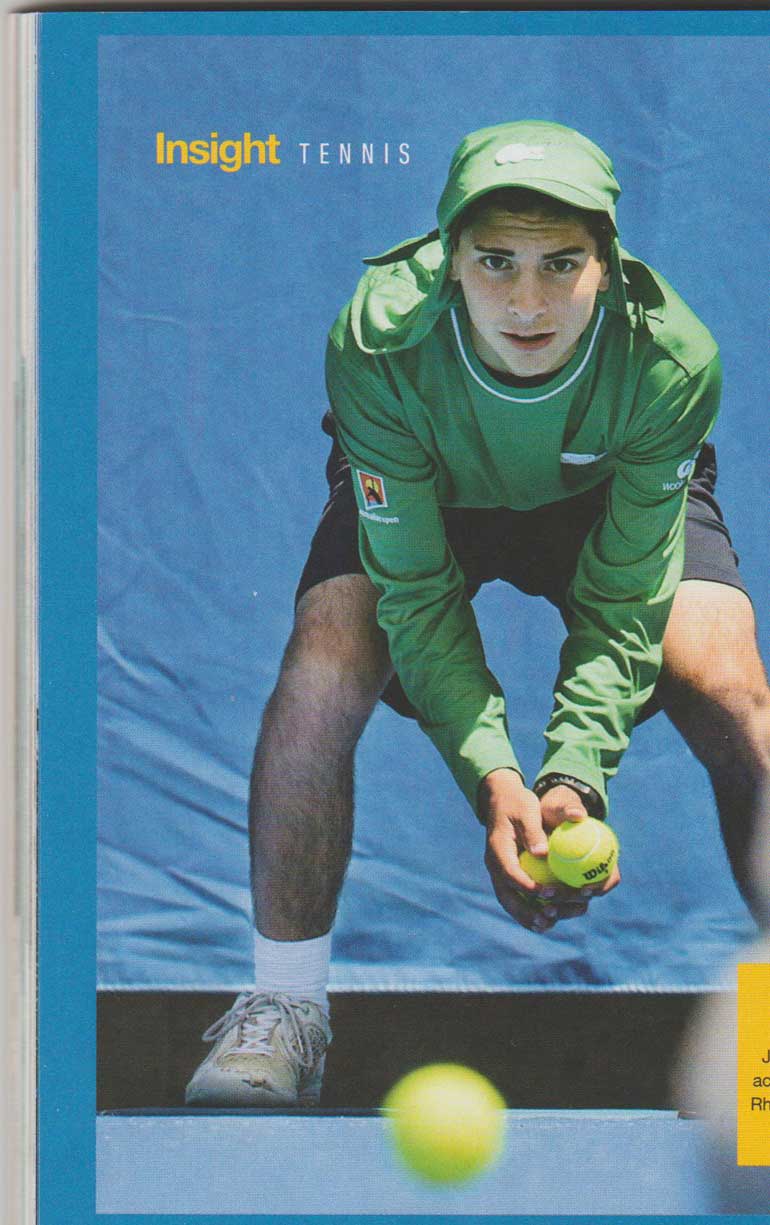Friday Dec 13, 2024
Friday Dec 13, 2024
Saturday, 13 February 2016 00:00 - - {{hitsCtrl.values.hits}}
 Watching the tennis matches during the recently concluded 2016 Australian Open, one couldn’t miss young boys and girls – six them in all – very active in the court every time a player misses a service or hits the ball outside the line. The ‘ball-kids,’ as they are called, are described as “the silent guardians of the Australian Open”.
Watching the tennis matches during the recently concluded 2016 Australian Open, one couldn’t miss young boys and girls – six them in all – very active in the court every time a player misses a service or hits the ball outside the line. The ‘ball-kids,’ as they are called, are described as “the silent guardians of the Australian Open”.
With hands behind their backs, they stand alert – attentive and watchful – and silent. They spring into action no sooner the ball gets out of the lines. They are quick, they run and catch the ball and with the ball in their hands wait erect turning towards the player who serves to see whether he would call for the ball. They are also watchful to see whether the players would need their towels and are ready to give them with the least possible delay.
“If they are doing their job well, you’re not supposed to notice them,” writes Jayne D’arcy in the latest issue of the Jetstar in-flight magazine.
There are 380 ball-kids who enjoy their school holidays in January doing service during the Australian Open. They are mainly youngsters between the ages of 11-15. They apply one year before the tournament. It’s their passion for the game that makes them seek a place. Some are junior players but not all.
They know they have to be dedicated to spend hours in the summer sun for two weeks at the Melbourne Park, the venue of the tournament. They undergo a familiarisation programme and warm up sessions prior to the tournament.
Though it looks simple, it’s a tough job. The authorities ensure that the ball-kids do not tire themselves. They have one hour on, one hour off. They have a hub to while away the time when they are free either playing video games or watching TV.
To beat the heat they are given a special padded necktie, soaked in cold water and wrung out before they wear it.
They work eight hours a day with four hours spent on court. They don’t get paid. They get a gift pack at the end of the tournament. Gifts generally include headphones, speakers and cameras.
Most of them have pleasant memories and consider it a privilege to watch and observe the world’s greatest players who turn up at the first Grand Slam of the year. This year all the ‘greats’ were there – Novak Djokovic, Roger Federer, Andy Murray, Rafael Nadak and Serena Williams – as well as upcoming champions.
This year’s Australia Open offered the highest prize money – A$ 44,000,000 – an increase of four million dollars. Men’s Singles winner, Defending Champion Novak Djokovic who beat Andy Murray in the final, received A$3,400,000 while female winner Angeline Kerber who beat defending champion Serena Williams collected A$1,700,000.
While there was a record attendance of 720,363, several more thousands watched over television.
This year Australia Open was played for the 104th year. The tournament consisted of both men’s and women’s singles and doubles draws as well as a mixed doubles event. There were singles and doubles events for both boys and girls (players under 18), which was part of the Grade A category of tournaments, and also singles, doubles and quad events for men’s and women’s wheelchair tennis players.
The matches were played on 25 hard courts. Leading the three show courts where all top grade matches are played is the Rod Lever Arena named after a three-time winner of the Australian Open and one of the world’s greatest tennis players.
Pix courtesy Jetstar

